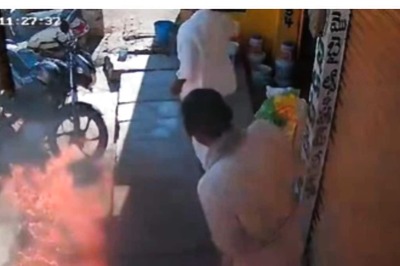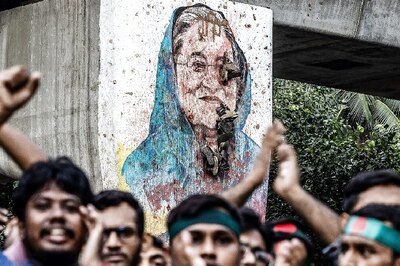
views
The multi-starrer Netflix series ‘IC 814: The Kandahar Hijack’, which relives the 1999 hijacking of an Indian Airlines flight by terrorists, has created a buzz around the country and reignited conversations about the incident from about 25 years ago. Now government sources have told CNN-News18 that a telephonic call in the name of Union Government Joint Secretary, J Lal, had allowed the plane to take off from Amritsar and leave Indian airspace.
On December 24, 1999, five masked men hijacked the aircraft — IC 814 — 40 minutes after it took off from the Tribhuvan International Airport in Kathmandu, bound for New Delhi. The hijackers forced the captain of the flight — Devi Sharan — to fly the plane into Pakistani airspace. However, the flight did not receive the clearance to land there. The aircraft then landed in Amritsar, with hardly any fuel left.
After the plane refuelled in Amritsar, the hijackers again forced the pilot to fly the aircraft to Lahore, where Pakistan’s Air Traffic Control (ATC) had turned off all lights and navigational aids at the airport, to prevent flight IC 814 from landing.
However, as the flight landed in Pakistan after much efforts and clearance, the refuelling was done and the aircraft took off for Dubai, where too, it was denied permission to land.
Later, as the flight landed in the UAE, 27 of the 176 passengers onboard were released. The hijackers, however, had fatally shot 25-year-old Rupin Katyal on the flight.
After this, the plane finally landed in the hijackers’ original destination, Taliban-controlled Afghanistan’s Kandahar airport. It was here that the hijackers negotiated with the then Atal Bihari Vajpayee government, which eventually ended on December 30 with the release of all the hostages for three terrorists — Ahmed Omar Saeed Sheikh, Masood Azhar, and Mushtaq Ahmed Zargar.
According to the government sources, that bogus call in the name of union government joint secretary J Lal led the staff at Sri Guru Ram Das Ji International Airport (then Raja Sansi Airport) in Amritsar to remove barricades and allow the aircraft to fly away.
After touching down in Amritsar, the captain wanted fuel in the plane and, sources said, there were no visible efforts at a rescue operation as people didn’t recognise it as the “missing plane”. The captain knew it was a hopeless situation but tried his best to secure the plane and passengers, they added.
Meanwhile, they said, a call came from the Crisis Management Group, asking that the plane be immobilised and tankers slowly moved in so the hijackers would think they were coming for refuelling.
These CMG calls were identified as Rubey Lal and another was from the union cabinet secretary himself, who wanted the plane to remain on the ground so the National Security Guard (NSG) could be put into action and the local Punjab police were alerted.
However, said the sources, a call came, asking for the aircraft to be refuelled immediately and airport staff acted on these directions swiftly, without realising that it was someone pretending to be the joint secretary from the ministry of civil aviation with the name J Lal. He also directed authorities to give a clear path to the flight immediately.
The sources said the Amritsar airport, which was short on staff in the evening, and amid all the chaos, allowed the plane to fly away, frustrating the government’s plans.
Sources said according to various theories this was either someone from Pakistan who wanted the aircraft to go out of India’s hands or someone from PM Vajpayee’s office who didn’t want commando action because their relative was on the flight.




















Comments
0 comment